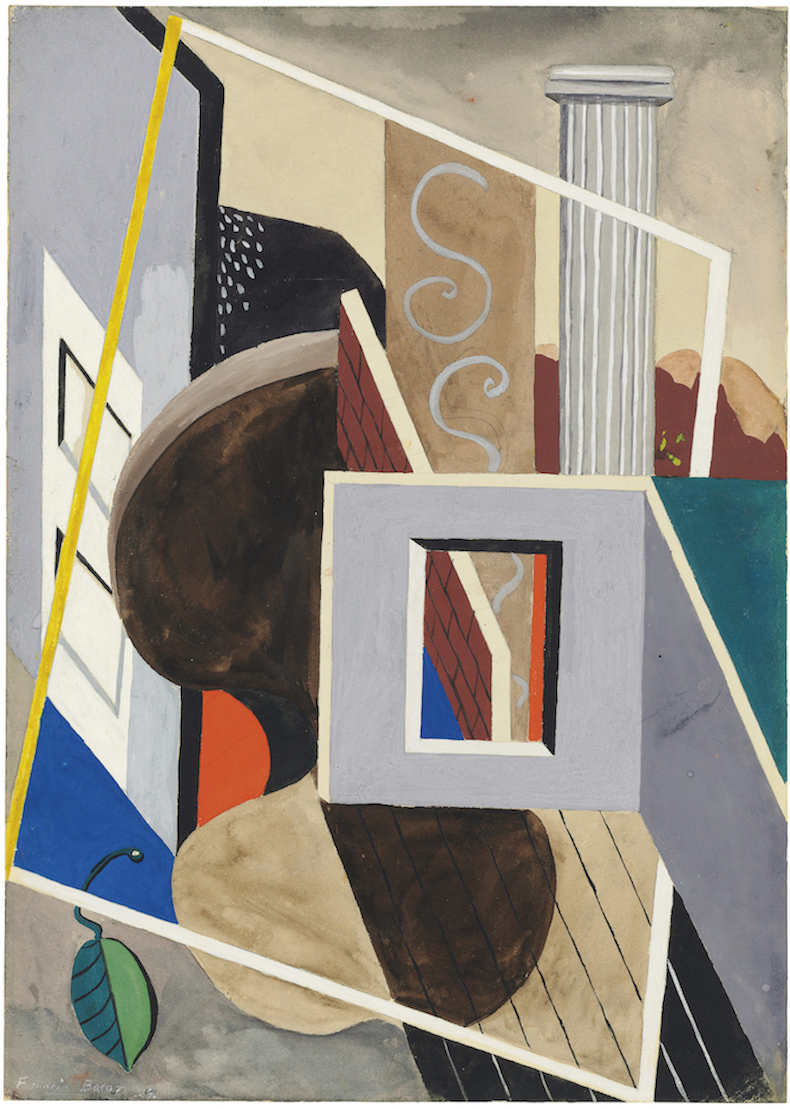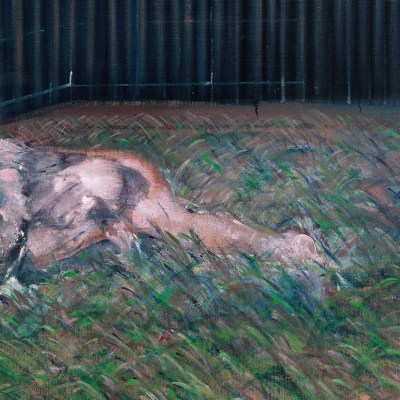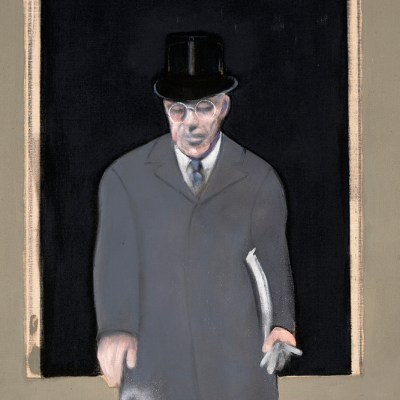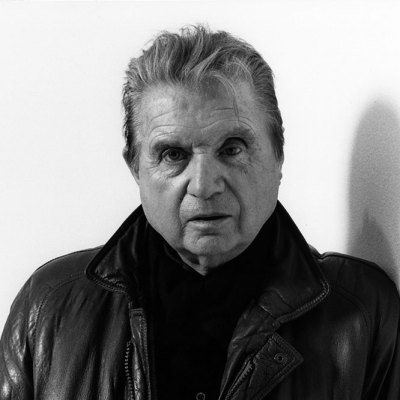If Francis Bacon’s short-lived career as a designer in the early 1930s is not widely understood, it is because he devoted immense energy to pretending it never happened. The artist seems to have been acutely embarrassed by his adventures in that world, possibly because (pace the recent biography by Annalyn Swan and Mark Stevens) ‘there was a moment when his design work was not an unpleasant chore but a chosen career’. He preferred to let it be known that he spent his youth drifting ‘from bar to bar’, merely dabbling in creative pursuits. An exhibition currently at the Espace de l’Art Concret in Mouans-Sartoux, however, sets out to investigate the artist’s work as a designer and trace his debt to contemporary trends in France. In terms of presentation, it is less an art-historical survey than a showroom, resembling the kind of ensemble a luxury design brand might stick in a Mortimer Street window display. A lack of contextual information works at cross-purposes to a visitor’s reasonable expectations: we have, after all, come to learn something about a little-discussed chapter of a famous artist’s life. So what, if anything, do we learn?
That the ostensible subject of the exhibition is represented only sparsely cannot be put down to curatorial negligence: for a start, Bacon didn’t actually make much furniture, and went to great lengths to destroy whatever paintings he realised before his late thirties. Indeed, what has been borrowed from Majid Boustany’s foundation – a painting, a gouache, a molar-shaped stool, a mirrored, circular table in tubular steel and a tapestry – represents an impressive haul. The galleries are padded out with contemporaneous paintings by Picasso and Léger, as well as furniture designed by the likes of Mallet-Stevens, Eileen Gray and even Le Corbusier, exhibits that might provide some contextual heft if their connections to Bacon were spelled out.
Bacon’s own exhibits are interesting, albeit as curios. Painting (1930) is a decent bit of juvenilia, depicting a series of what look like painted screens shooting up like vegetation from a desolate landscape. While it owes an obvious debt to Picasso, it doesn’t feel as derivative as it might. The same cannot be said of Gouache (1929), a shaky compilation of every cliché in the Surrealist image bank. Still, you can’t help but find yourself searching for (and sometimes identifying) hints of Bacon’s later style.
Gouache (1929), Francis Bacon. Francis Bacon MB Art Foundation, Monaco. © Adagp, Paris 2024

The most exciting discovery here is the tapestry, a large wall-mounted rug emblazoned with ‘African’-inspired cubist motifs. Bacon made a number of these pieces, one of which appeared in a spread devoted to the young designer in the August 1930 issue of The Studio. Several lifetimes of cigarette smoke and wear have yellowed and faded the rug’s cream and dun colours to the point that its patterns are barely discernible: the only element of the composition that confirms it as Bacon’s handiwork is a string of brand-building block capitals spelling out his name in the bottom left-hand corner. A facsimile of the article in The Studio is as generous as the show gets in terms of explanation. Probably written by the fashion editor Madge Garland, the piece is dominated by photographs of the artist’s live-in work space, a converted garage in South Kensington – Bacon’s centre of gravity for the rest of his life.
Rug (1929), Francis Bacon. Francis Bacon MB Art Foundation, Monaco. © Adagp, Paris 2024

The photos accompanying the article find a visual echo in a tiny reproduction of a painting of the studio by Roy De Maistre, the older Australian artist who was something of a mentor to Bacon. The original was one of two views De Maistre painted of the space, both of which were exhibited there in October 1930: the strange mise en abyme this would have created seems a sophisticated touch, and a sign of quite how much thought went into the two shows Bacon is known to have staged on the premises, presenting the work of De Maistre and the artist Jean Shepeard alongside his own paintings, tapestries and furniture. The spotless, empty room, glimpsed from an unusual perspective, seems to presage some of the eerie interiors Bacon would go on to produce in the 1960s and, at the painting’s extremities, De Maistre interrupts the rhythm of sharp edges that otherwise dominate the composition by including two circular tables of tubular steel, one topped with glass, the other’s surface obscured by an abundant vase of flowers. An identical design is on display in the adjacent gallery, its top pockmarked by gravy-hued rust that implies it probably wasn’t passed down as an heirloom. You can’t help but wonder what kind of existence it has led – too much to ask, perhaps, but it would still be interesting to know where and how Boustany and his people found this object.
Table (1930), Francis Bacon. Francis Bacon MB Art Foundation, Monaco. © Adagp, Paris 2024

A fourth and final gallery consists of a makeshift cinema screening a slideshow of the artist’s paintings from the late 1940s to the mid 1970s. If you can get past the selection of Bacon quotations interspersed with the images, it is fascinating to see how elements of modernist furniture made their way into the artist’s better-known compositions, acting as rigid, rational foils to the chaos unfolding around them. That observation is not an original one, but seeing the artist’s oeuvre through the prism of design here is great fun – and in one instance quite eye-opening. This coup de grâce is delivered through a projection of one of Bacon’s best known works, Painting 1946. Amid the screaming meat orifice and borderline camp (if still terrifying) drama for which we might remember the piece, something weird is going on. Look down to the lower third of the composition and the white rings seemingly imprisoning the tortured figure in the middle distance suddenly take on a new identity: it becomes abundantly clear that the painter has borrowed his own furniture to decorate the scene. What we are looking at is nothing other than the distinctive form of that table a few rooms back, altered with only a modicum of painterly licence. As for what this says about the artist and his odd compulsion to erase his own past, we can only speculate – one of many unanswered questions prompted by this frustrating but not uninteresting show. Of one thing, however, we can be sure: Francis Bacon would have hated it.
Figure on Sofa (1932), Roy de Maistre. Francis Bacon MB Art Foundation, Monaco. © Adagp, Paris 2024

‘Francis Bacon and the Golden Age of Design’ is at the Espace de l’Art Concret, Mouans-Sartoux, until 5 January 2025.



